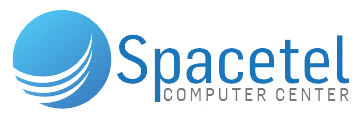About Me
In as we speak's quickly evolving world, access to quality training stands as a critical determinant of individual success and societal progress. Nevertheless, despite significant advancements in instructional systems globally, disparities persist, hindering equal opportunities for all. From rural communities to urban centers, socioeconomic factors, geographical boundaries, and systemic inequalities often create chasms in instructional access. Addressing these challenges requires multifaceted strategies geared toward closing the gap and ensuring equitable access to quality schooling for all individuals, regardless of their background or circumstances.
One of many primary strategies for improving access to quality training revolves round enhancing infrastructure and resources, particularly in underserved areas. Rural communities and marginalized urban neighborhoods usually lack primary instructional facilities, reminiscent of schools outfitted with modern technology, libraries, and laboratories. By investing in infrastructure development, governments and educational authorities can create conducive learning environments that foster academic progress and innovation. Additionally, providing adequate resources, together with textbooks, teaching materials, and internet connectivity, is essential for empowering each students and educators with the tools mandatory for efficient learning and teaching.
Moreover, leveraging technology can play a pivotal function in increasing academic access beyond traditional boundaries. With the advent of online learning platforms and digital resources, individuals can access academic content from wherever, transcending geographical limitations. Integrating technology into academic practices enables personalized learning experiences tailored to the diverse needs and learning styles of students. This approach not only enhances accessibility but also promotes inclusivity by accommodating learners with disabilities and people facing mobility constraints.
Additionalmore, addressing socioeconomic obstacles is essential for making certain equitable access to quality education. Monetary constraints typically deter individuals from pursuing higher schooling or accessing supplementary learning opportunities. Scholarships, grants, and monetary aid programs can mitigate these limitations by providing help to economically disadvantaged students. Additionally, initiatives aimed at promoting monetary literacy and education savings plans empower families to prioritize education and plan for their children's academic future effectively.
One other essential facet of closing the educational gap includes fostering partnerships and collaborations between numerous stakeholders, including governments, educational institutions, non-profit organizations, and private sector entities. Collaborative efforts enable the pooling of resources, experience, and progressive solutions to address systemic challenges comprehensively. Public-private partnerships, as an illustration, can facilitate the implementation of academic initiatives, similar to mentorship programs, vocational training, and career steering providers, which broaden academic pathways and enhance employability prospects for students.
Furthermore, adopting inclusive policies and practices is imperative for creating an educational ecosystem that embraces diversity and equity. Training systems should prioritize inclusive curriculum development, which displays various cultural views, histories, and experiences. Moreover, fostering a supportive and inclusive learning environment, free from discrimination and bias, is essential for promoting academic success and emotional well-being among students from marginalized communities.
Additionally, community interactment plays a pivotal role in enhancing academic access and outcomes. Building sturdy partnerships with local communities empowers them to actively participate in shaping educational policies, advocating for their wants, and supporting instructional initiatives. Community-based mostly organizations can serve as invaluable allies in identifying and addressing specific challenges faced by underserved populations, thereby fostering a way of ownership and collective responsibility for improving instructional outcomes.
Lastly, steady monitoring and evaluation are essential for assessing the effectiveness of instructional interventions and figuring out areas for improvement. Data-driven decision-making enables policymakers and educators to allocate resources strategically, tailor interventions to specific wants, and measure progress towards closing the educational gap. By employing proof-based mostly approaches and fostering a culture of accountability, academic systems can drive meaningful change and make sure that each individual has equitable access to quality education.
In conclusion, closing the gap in instructional access requires concerted efforts and a holistic approach that addresses the multifaceted barriers confronted by underserved populations. By investing in infrastructure, leveraging technology, addressing socioeconomic limitations, fostering partnerships, embracing inclusivity, engaging communities, and prioritizing data-driven decision-making, societies can pave the way for a more equitable and inclusive educational landscape. Ultimately, ensuring quality schooling for all shouldn't be only a moral imperative but additionally a cornerstone for building a more prosperous and equitable future for generations to come.
If you beloved this article and you would like to acquire additional information relating to South America kindly visit our own web-page.
Location
Occupation


Recent Comments